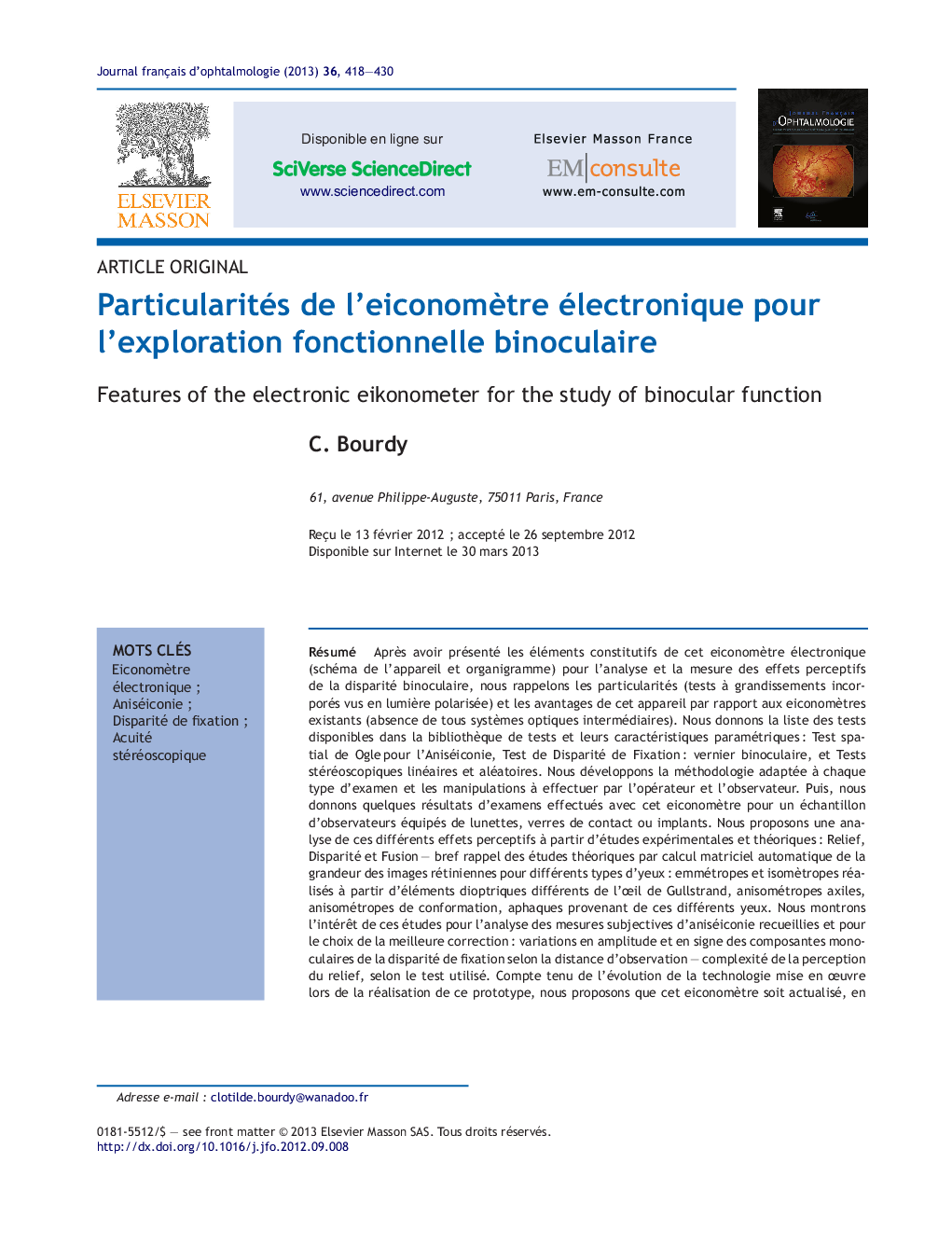| Article ID | Journal | Published Year | Pages | File Type |
|---|---|---|---|---|
| 4023781 | Journal Français d'Ophtalmologie | 2013 | 13 Pages |
Abstract
After presenting the components of this electronic eikonometer (device schematic and organizational chart) for the analysis and measurement of perceptive effects of binocular disparity, we review the specifics (tests with incorporated magnifications seen in polarized light) and the advantages of this device as compared to existing eikonometers (absence of any intermediary optical system). We provide a list of available tests in the test library and their parametric characteristics: Ogle Spatial Test for Aniseikonia, Fixation Disparity Test: binocular nonius, and Linear and Random stereoscopic tests. We develop a methodology adapted to each type of test and the manipulations to be performed by the operators and observers. We then provide some results of examinations performed with this eikonometer for a sample of observers equipped with glasses, contact lenses or implants. We propose an analysis of these various perceptive effects from experimental and theoretical studies: association between Depth, Disparity and Fusion; brief review of theoretical studies by automatic matrix calculus of retinal image size for various types of eyes: emmetropic and isometropic eyes based on various dioptric elements from Gullstrand's eye, axial anisometropia, anisometropia of conformation, aphakia resulting from these various eyes. We demonstrate the role of these studies in the analysis of subjective measurements of aniseikonia and for the choice of best correction: variations in amplitude and sign of the monocular components of the fixation disparity as a function of the viewing distance, Complexity of depth perception, according to the test used. Considering the evolution of the technology used for the realization of this prototype, we propose that this eikonometer be updated, in particular by using high-resolution flat screens, which would allow improvement and enrichment of the test library (definition, contrast and size of the observed images).
Keywords
Related Topics
Health Sciences
Medicine and Dentistry
Ophthalmology
Authors
C. Bourdy,
